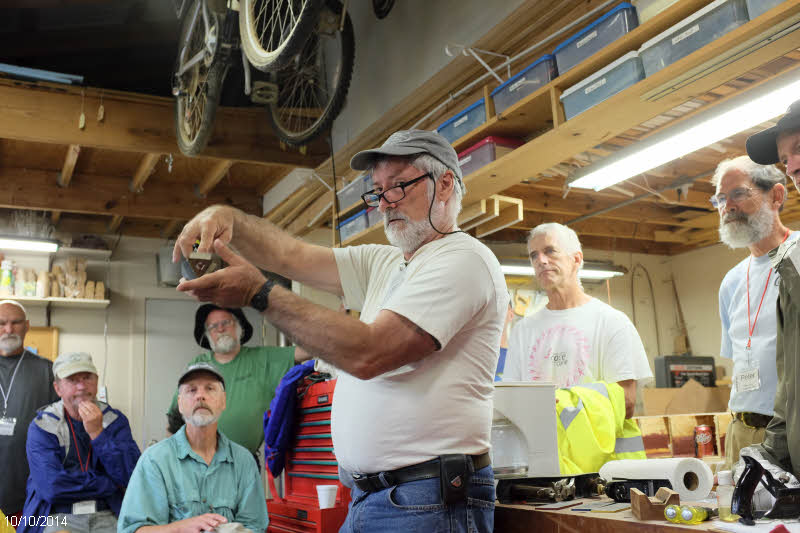With the skegs rough cut and laminated, the next step was to bring them down to final dimension. Keeping the curves fair and the right shape to fit the hull, and keeping both skegs identical was a daunting prospect.
However, I realized that I could use the pattern I cut to trace out the parts as a router template to trim the skegs to final shape. The first step was to screw the pattern to the rough-shaped part.
I then used a pattern bit with a bottom bearing in the router table to trim the stock to the final dimension. As you can see, the bit is not long enough to to the entire side, and there is also a little lip on the bottom between the bearing and the bit. This won't be a problem.
Here's a shot of the nice curve towards the stern.
Once I went all the way around, I removed the template, and switched to a pattern bit with a top bearing. The bearing now bears against the part of the skeg that's already routed to final dimension, and brings the remainder of the edge into line. I flipped the stock over to get both edges finished.
The masonite I used for a pattern was a little bit too short, so I now drew in the curve at the stern and cut that out with a jigsaw.
And shaped it to final dimension with my Shinto rasp.
Looking good. The fit to the hull is as good as you make the pattern. In my case, I'll have to do just a bit of minor fitting before I'm satisfied.
Next I routed the finger grips in the sides of the skegs with a bit that looks like this. This is 3/8" radius, and I cut about 1/4" deep.
The grooves look like this. The gentle curve of the skeg was easy to run against the fence for consistent spacing.
I followed up with a 1/4" roundover bit on the edges so that my fiberglass cloth will lay over there nicely, and hand sanded the edges of the finger grooves to get rid of the sharp edge.
Next I put tape over the bottom of the holes where there were voids in the plywood, and poured in unthickened epoxy to fill those spaces.
After that cures I will do a little fairing work to fill the slight depressions that are left, some edges that chipped out a bit, and any other irregularities. Then I will fiberglass these parts.



















































